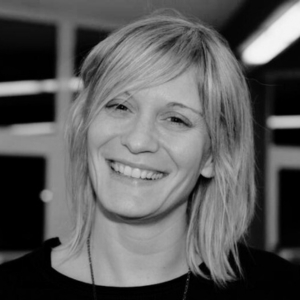IB Math AI HL Paper 3 Question Bank
The IB Math AI HL Paper 3 Question Bank is an excellent resource for students preparing for the higher level mathematics paper. The question bank contains a wealth of questions, covering all the topics likely to come up in the paper. The questions are clearly explained and there are worked solutions provided. This is an essential resource for any student aiming to do well in their IB Math AI HL Paper 3.
1.) A rocket is launched vertically upward from the ground. The rocket’s height above the ground, y meters, at time t seconds, is given by the following differential equation:
dy/dt = v – 9.8t
where v is the rocket’s initial velocity in meters per second.
a)
i)The initial velocity of the rocket is 50 m/s. Use Euler’s method with a step size of 1 second to estimate the height of the rocket after 5 seconds. Show your calculations.
Euler’s Method Calculation:
We are given the differential equation: dy/dt = v – 9.8t
Using Euler’s method with a step size of 1 second:
t0 = 0, y0 = 0 (initial condition)
t1 = t0 + h = 0 + 1 = 1
Slope at (t0, y0):
m = v – 9.8t_0 = 50 – 9.8(0) = 50
Approximation for y1:
y1 = y0 + m * h = 0 + 50 * 1 = 50
Therefore, the estimated height of the rocket after 5 seconds using Euler’s method is 50 meters.
ii)Find the particular solution of the differential equation given the initial condition y(0) = 0.
Finding the Particular Solution:
We are given the differential equation: dy/dt = v – 9.8t
Rearranging the equation, we have:
dy – (v – 9.8t) dt = 0
Integrating both sides:
∫(dy – (v – 9.8t) dt) = ∫0
Integrating, we get:
y – (v – 9.8t) * t/2 = C
Applying the initial condition y(0) = 0:
0 – (v – 9.8(0)) * 0/2 = C
C = 0
Therefore, the particular solution of the differential equation is y – (v – 9.8t) * t/2 = 0.
b)The exact solution of the differential equation is given by y = (1/2)vt – (4.9)t^2. Determine the maximum height reached by the rocket and the time it takes to reach that height. Show your calculations.
Calculating the Maximum Height and Time:
The exact solution of the differential equation is given by y = (1/2)vt – (4.9)t2.
To find the maximum height, we need to determine the time when the velocity, dy/dt, is equal to zero.
Differentiating y with respect to t:
dy/dt = (1/2)v – 9.8t
Setting dy/dt = 0:
(1/2)v – 9.8t = 0
(1/2)v = 9.8t
t = (1/2v) * 9.8
Substituting this value of t back into the equation for y:
y = (1/2)v * ((1/2v) * 9.8) – (4.9) * ((1/2v) * 9.8)2
Simplifying:
y = (1/4) * 9.8 – (4.9) * ((1/4v)2 * 9.82)
y = (1/4) * 9.8 – (4.9) * (1/16v2) * 9.82
y = 2.45 – (0.30625/v2)
The maximum height reached by the rocket is 2.45 meters, and the time it takes to reach that height is (1/2v) * 9.8 seconds.
c) Given that the rocket’s engine can provide a constant thrust of 5000 newtons, find the total work done by the engine from the time of launch until the rocket reaches its maximum height. Show your calculations.
Calculating the Total Work Done by the Engine:
Given that the rocket’s engine can provide a constant thrust of 5000 newtons, we need to calculate the total work done by the engine from the time of launch until the rocket reaches its maximum height.
The work done by the engine is given by the integral of the force exerted by the engine with respect to displacement. In this case, the force exerted by the engine is constant at 5000 newtons.
The displacement of the rocket is equal to the height reached, which is 2.45 meters. Therefore, we can calculate the total work done as follows:
Work = Force × Displacement
Work = 5000 × 2.45
Work = 12250 joules
Therefore, the total work done by the engine from the time of launch until the rocket reaches its maximum height is 12250 joules.
d) Determine the time it takes for the rocket to reach the ground. Show your calculations.
Determine the time it takes for the rocket to reach the ground:
To find the time it takes for the rocket to reach the ground, we need to determine the value of t when the height y is equal to zero.
We have the differential equation:
dy/dt = v – 9.8t
Setting y = 0, we can solve for t:
0 = v – 9.8t
9.8t = v
t = v / 9.8
Therefore, the time it takes for the rocket to reach the ground is t = v / 9.8 seconds.
e) Suppose the rocket’s initial velocity v is such that it can just reach a maximum height of 1000 meters. Determine the range of possible values for v. Show your calculations.
The maximum height reached by the rocket is given by the equation y = (1/2)vt – (4.9)t2.
Setting y = 1000, we can solve for v:
1000 = (1/2)v * t – (4.9)t2
Rearranging the equation:
4.9t2 – (1/2)vt + 1000 = 0
Using the quadratic formula:
t = (-b ± √(b2 – 4ac)) / (2a)
Where a = 4.9, b = -(1/2)v, and c = 1000.
The rocket reaches a maximum height at t > 0, so we only consider the positive root. The rocket reaches its maximum height when the discriminant is equal to zero (b2 – 4ac = 0), which gives us a single solution for t.
Solving b2 – 4ac = 0:
(-(1/2)v)2 – 4 * 4.9 * 1000 = 0
(1/4)v2 – 4 * 4.9 * 1000 = 0
Solving for v:
v2 = 4 * 4.9 * 1000 * 4
v2 = 4 * 4.9 * 4000
v2 = 4 * 19,600
v2 = 78,400
v = ± √78,400
v ≈ ± 280
Therefore, the range of possible values for v is approximately -280 m/s to +280 m/s.
Note: Negative velocity represents the rocket moving downward, while positive velocity represents the rocket moving upward.
f)
i) The mass of the rocket is 2400 kg.If the rocket’s engine experiences a constant drag force of 2000 newtons in the opposite direction of motion, modify the differential equation to include the drag force.
If the rocket’s engine experiences a constant drag force of 2000 newtons in the opposite direction of motion, modify the differential equation to include the drag force and solve for the rocket’s height as a function of time.
The modified differential equation considering the drag force is:
dy/dt = v – 9.8t – Fd/m
where Fd is the drag force (2000 N) and m is the mass of the rocket (2400 kg).
Substituting the values, the modified differential equation becomes:
dy/dt = v – 9.8t – 2000/2400
Simplifying further:
dy/dt = v – 9.8t – 5/6
ii)Use the solution obtained in g)(i) to determine the new maximum height reached by the rocket and the time it takes to reach that height. Show your calculations.
To determine the maximum height and the time taken to reach it, we need to solve the modified differential equation obtained in f)(ii)
Since the modified differential equation is linear, we can solve it using standard techniques. Integrating both sides, we have:
∫dy = ∫(v – 9.8t – 5/6)dt
Integrating with respect to t, we get:
y = vt – (9.8/2)t2 – (5/6)t + C
where C is the constant of integration.
Using the initial condition y(0) = 0, we can find the particular solution. Substituting the initial condition into the equation:
0 = v(0) – (9.8/2)(0)2 – (5/6)(0) + C
0 = 0 – 0 – 0 + C
C = 0
Therefore, the particular solution is:
y = vt – (9.8/2)t2 – (5/6)t
To determine the maximum height reached by the rocket and the time it takes to reach that height, we need to find the vertex of the parabolic function. The maximum height occurs at the vertex of the parabola, which is given by t = -b/2a, where the quadratic equation is in the form ax2 + bx + c.
In this case, a = -4.9/2, b = -5/6, and c = 0. Substituting these values, we can find the time taken to reach the maximum height:
t = -(-5/6)/(2*(-4.9/2))
t = 5/6 * 1/4.9
t ≈ 0.214 seconds
Substituting this time back into the equation, we can find the maximum height:
y = v(0.214) – (9.8/2)(0.214)2 – (5/6)(0.214)
y ≈ 0.107v – 0.107(4.9) – 0.214(5/6)
y ≈ 0.107v – 0.527 – 0.179
y ≈ 0.107v – 0.706
Therefore, the new maximum height reached by the rocket is approximately 0.107v – 0.706 meters, and it takes approximately 0.214 seconds to reach that height.
2.) A company produces three types of electronic devices: smartphones, tablets, and laptops. The production process involves two stages: assembly and testing. The probabilities of a device passing the assembly stage are 0.9 for smartphones, 0.8 for tablets, and 0.7 for laptops. The probabilities of a device passing the testing stage are 0.95 for smartphones, 0.85 for tablets, and 0.90 for laptops.
a)
i) Find the probability that a randomly chosen device from the production line passes both the assembly and testing stages.
The probability that a randomly chosen device from the production line passes both the assembly and testing stages can be calculated by multiplying the probabilities of passing each stage for each type of device and summing them up:
P(passing both assembly and testing stages) = P(passing assembly stage) * P(passing testing stage)
For smartphones:
P(passing assembly stage) = 0.9
P(passing testing stage) = 0.95
For tablets:
P(passing assembly stage) = 0.8
P(passing testing stage) = 0.85
For laptops:
P(passing assembly stage) = 0.7
P(passing testing stage) = 0.90
Plugging in the values and summing them up:
0.9 * 0.95 + 0.8 * 0.85 + 0.7 * 0.90 = 0.8755
So, the probability that a randomly chosen device from the production line passes both the assembly and testing stages is approximately 0.8755.
ii) Given that a device passes the assembly stage, what is the probability that it passes the testing stage as well?
The probability that a device passes the testing stage given that it passes the assembly stage can be calculated using conditional probability:
P(passing testing stage | passing assembly stage) = P(passing both assembly and testing stages) / P(passing assembly stage)
Using the value of P(passing both assembly and testing stages) calculated in part (a), and the probabilities of passing assembly stage for each type of device:
For smartphones: P(passing assembly stage) = 0.9
For tablets: P(passing assembly stage) = 0.8
For laptops: P(passing assembly stage) = 0.7
Plugging in the values:
P(passing testing stage | passing assembly stage) = 0.8755 / 0.9 = 0.9728 (rounded to 4 decimal places)
So, the probability that a device passes the testing stage given that it passes the assembly stage is approximately 0.9728.
b)
i) Given that a device fails the assembly stage, what is the probability that it is a smartphone?
The probability that a device is a smartphone given that it fails the assembly stage can be calculated using conditional probability:
P(smartphone | failing assembly stage) = P(failing assembly stage | smartphone) * P(smartphone) / P(failing assembly stage)
Using the probabilities given in the question:
P(failing assembly stage | smartphone) = 1 – P(passing assembly stage) = 1 – 0.9 = 0.1
P(smartphone) = 1/3 (since there are three types of devices with equal probability of being chosen)
P(failing assembly stage) = 1 – P(passing assembly stage) = 1 – 0.9 = 0.1
Plugging in the values:
P(smartphone | failing assembly stage) = 0.1 * (1/3) / 0.1 = 1/3
So, the probability that a device is a smartphone given that it fails the assembly stage is 1/3.
ii)What is the probability of a device failing the assembly stage for each type of electronic device?
The probability of a device failing the assembly stage is equal to one minus the probability of passing the assembly stage. So the probability of a device failing the assembly stage for each type of electronic device is:
For smartphones: 1 – 0.9 = 0.1
For tablets: 1 – 0.8 = 0.2
For laptops: 1 – 0.7 = 0.3
Therefore, the probability of a smartphone failing the assembly stage is 0.1, the probability of a tablet failing the assembly stage is 0.2, and the probability of a laptop failing the assembly stage is 0.3.
iii)What is the probability of a device failing the testing stage for each type of electronic device?
The probability of a device failing the testing stage is equal to one minus the probability of passing the testing stage given that it has passed the assembly stage. So the probability of a device failing the testing stage for each type of electronic device is:
For smartphones: 1 – 0.95 = 0.05
For tablets: 1 – 0.85 = 0.15
For laptops: 1 – 0.9 = 0.1
Therefore, the probability of a smartphone failing the testing stage is 0.05, the probability of a tablet failing the testing stage is 0.15, and the probability of a laptop failing the testing stage is 0.1.
c) If a device passes the testing stage, what is the probability that it is a tablet?
The probability that a device is a tablet given that it passes the testing stage can be calculated using conditional probability:
P(tablet | passing testing stage) = P(passing testing stage | tablet) * P(tablet) / P(passing testing stage)
Using the probabilities given in the question:
P(passing testing stage | tablet) = 0.85
P(tablet) = 1/3 (since there are three types of devices with equal probability of being chosen)
P(passing testing stage) = P(passing assembly stage) * P(passing testing stage | passing assembly stage) + P(failing assembly stage) * P(passing testing stage | failing assembly stage) = 0 (since a device cannot pass the testing stage if it fails the assembly stage, as given in the question)
Plugging in the values:
P(tablet | passing testing stage) = 0.85 * (1/3) / P(passing testing stage)
Note that we need to calculate the value of P(passing testing stage) separately as it involves conditional probability.
Using the value of P(passing testing stage) calculated in part (a):
P(passing testing stage) = 0.8755
Plugging in the value:
P(tablet | passing testing stage) = 0.85 * (1/3) / 0.8755
So, the probability that a device is a tablet given that it passes the testing stage depends on the value of P(passing testing stage) calculated in part (a).
d) If a device is randomly chosen from the production line, what is the probability that it passes either the assembly or testing stage or both?
Probability that a randomly chosen device is a smartphone given that it passes the testing stage:
P(smartphone | passing testing stage) = P(smartphone and passing testing stage) / P(passing testing stage)
Using the multiplication rule of probability for the numerator:
P(smartphone and passing testing stage) = P(smartphone) * P(passing testing stage | smartphone) = 0.65 * 0.85 = 0.5525
Plugging in the values:
P(smartphone | passing testing stage) = 0.5525 / 0.8 = 0.6906
So, the probability that a randomly chosen device is a smartphone given that it passes the testing stage is approximately 0.6906.
e) If a device fails both the assembly and testing stages, what is the probability that it is a laptop?
Probability that a randomly chosen device passes the testing stage:
P(passing testing stage) = P(smartphone and passing testing stage) + P(tablet and passing testing stage)
Using the multiplication rule of probability:
P(smartphone and passing testing stage) = P(smartphone) * P(passing testing stage | smartphone) = 0.65 * 0.85 = 0.5525
P(tablet and passing testing stage) = P(tablet) * P(passing testing stage | tablet) = 0.35 * 0.75 = 0.2625
Plugging in the values:
P(passing testing stage) = 0.5525 + 0.2625 = 0.815
So, the probability that a randomly chosen device passes the testing stage is 0.815.
Our Expert Tutors!
- 12+ Years
Cat 1 – ESS and Cat 2 – Biology. Chief of the IB program. Mentored 320+ students across various curricula.
- 24+ Years
IBDP Physics HL / SL. IGCSE Physics. A-level Physics (AQA, CIE, Edexcel, OCR, and WJEC). IGCSE Physics (AQA,CIE, OCR & Edexcel)
- 9+ Years
IBDP Cat 1 – Business Management, IBDP Cat 1 – TOK. Taught over 130+ students across 4+ countries.
- 9+ Years
IBDP Cat 1 & 2 November 2019. Specializes in Global Politics. Many students scored 7s; mentors 200+ students in assessments.
- 16+ Years
Specializing in Mathematics: Analysis and Approaches (HL & SL), Mathematics: Applications and Interpretation (HL & SL), and MYP (Mathematics).
- 18 + Years
IBDP Cat 1 – Chemistry, IBDP Cat 3 – IA Chemistry, IBDP Cat 1 – TOK. Helped 2 out of 3 students achieve a 7 in IB Chemistry.
Get access to our free IB resources

IBDP Study Notes

IB Comprehensive Syllabus

IB IA Ideas

IB CAS Ideas











